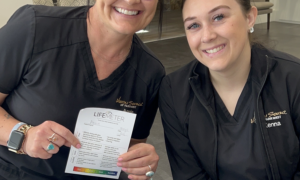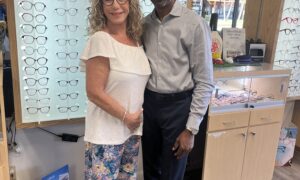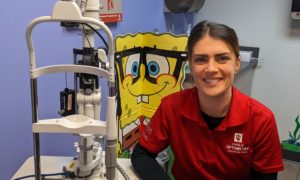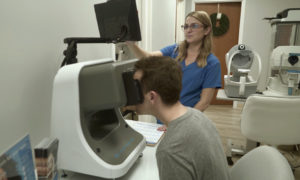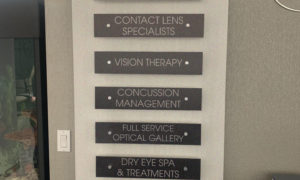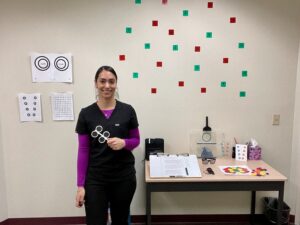
Sonia Singh, OD, Drs. Licausi’s and Zilnicki’s associate in their second office’s vision therapy space. Drs. Licausi and Zilnicki note the importance of carefully evaluating the use and profitability of a second office before committing yourself to this long-term investment.
Making one of the hardest decisions for a practice owner.
By Miki Lyn Zilnicki, OD, FCOVD,
and Jessica Licausi, OD, FAAO, FCOVD
April 17, 2024
Many ODs dream of having the kind of patient base that warrants a second location. The question is how to determine if it’s the right time for your practice to expand into another office.
Here is how we are wading through this huge decision, and what we are learning along the way.
Why We Asked Ourselves if it Was Time for a Second Location
We were growing out of our current space. Our primary location is set up as a multi-vision therapist, one-doctor space with multiple vision therapy rooms and one exam lane.
Now that we have grown to have one full-time vision therapist and two part-time vision therapists, there is only space for one of us doctors to be in the office at a time. There is no other space/room in our current location that could be phased into a second exam lane.
While we thought about relocating to a larger space in our current location, there were some cons to this. The first is we looked and there isn’t a better, more cost-effective space available in the area. The other is we really love our location, as it is easily accessible for our patients coming from farther east of where we are. This led us to think about a separate second location that could bring vision therapy to another, under-served area.
In addition, one of our main referral sources sat us down and showed us the need to act sooner rather than later. Among those we provide vision therapy to are people with concussions. These people often have driving restrictions place on them during their recovery. For that reason, our current location is frequently inaccessible to many concussion patients referred to us by that doctor.
This leaves a large chunk of that doctor’s patient base under-served and not receiving the treatment they need to gain a full recovery.
The solution was to set up a remote site within the same building as this referring healthcare provider to offer an alternative option to better serve these patients and others in that geographic area.
Other Articles to Explore
Trialing a Second Location Before Committing
We are currently renting a one-room space, one day a week. The landlords were supportive, giving us a prorated one-day-a-week rate with a one-year contract with us both reevaluating the contract details at the one-year mark.
They were even flexible enough to give us a no-charge two-month break from the location during maternity leaves to allow us to cover our primary location sufficiently with doctors.
While discussing exactly what services we would provide at this location, we thought it was a no-brainer to make the space vision therapy-only from a financial standpoint. Vision therapy rooms can be set up in an inexpensive way (and much less expensive than a full exam lane).
With the cost of rent, equipment and start-up fees, it took us approximately three months to break even on the space, and then we started to make a profit.
Profitable Enough to Make a Long-Term Investment?
Running the second location as a vision therapy-only space has been profitable for us so far, but we hit a plateau with the schedule at max capacity with one day a week and only one provider there. We are now working through the financials of making the leap into providing full exams in this new space.
The administrative load of opening a second location is the most challenging component. There are many logistics in running an organized practice in multiple locations. We had to communicate clearly with our staff on when and what the second location was providing, so they could convey this information to patients accurately.
For now, we are running all scheduling and billing from our primary location (we operate co-pay/out-of-pocket service payment collection through Weave, so we can easily collect payment electronically). Another consideration was to make sure this second satellite location was far enough away to truly pull an additional patient population into our practice.
We are approaching our one-year mark in the satellite location in a couple months. We have seen the demand for vision therapy services grow even more for this location while maintaining a full schedule at our primary location.
As we potentially grow this trial location into a full second office, we would ideally staff the space with a receptionist and one vision therapist to start, along with a doctor. We would have to figure out how to do this as we are a smaller office and would need to either pull staff from our primary location or hire new team members.
Our thought process is to utilize our current staff as much as possible to increase our profit margin. Our long-term goal is to have our main office be open four days a week and a second location open 2-3 days.
Still Mulling it Over
Overall, we have seen many positives in having a second location, but we are still trying to figure out the logistics of what this looks like long-term. We are currently at a crossroads in deciding if it makes sense to add more space and more staffing. We are evaluating our goals and visualizing what our ideal office schedule looks like. Once we have a clear picture of what we want, then we can work to take the necessary steps to get there.
We recognize that we are in a fortunate position. We offer an optometric specialty that can be run in a small space, which enabled us to trial a second location in a cost-effective way.
We are still on the fence about how quickly, and just how much, to grow this trial of a second location. We would love to hear guidance and advice from others who have been through this themselves!
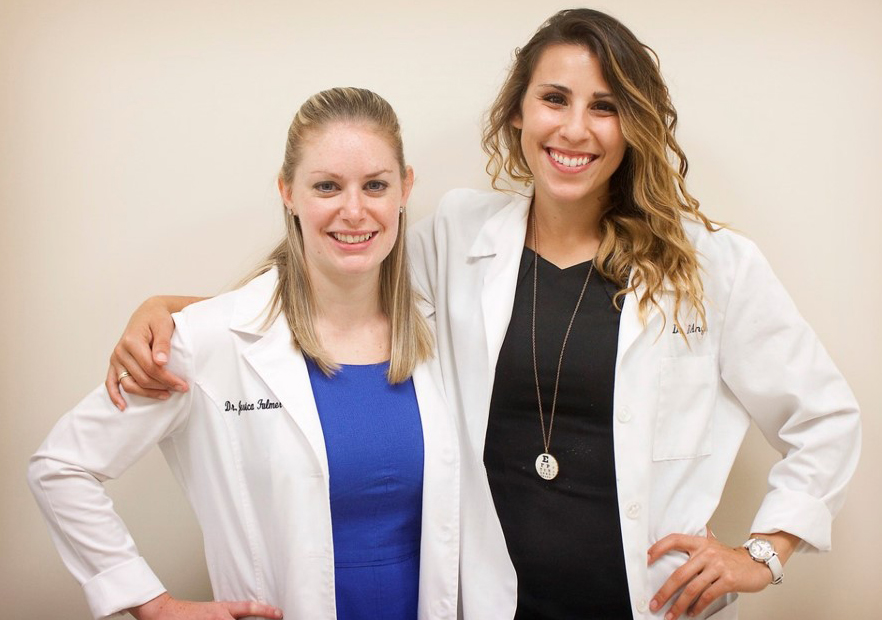 Miki Lyn Zilnicki, OD, FCOVD, and Jessica
Miki Lyn Zilnicki, OD, FCOVD, and Jessica
Licausi, OD, FAAO, FCOVD, are co-owners of Twin Forks Optometry and Vision Therapy in Riverhead, NY.
To contact Dr. Zilnicki: DrZilnicki@twinforksoptometry.com.
To contact Dr. Licausi: DrLicausi@twinforksoptometry.com





